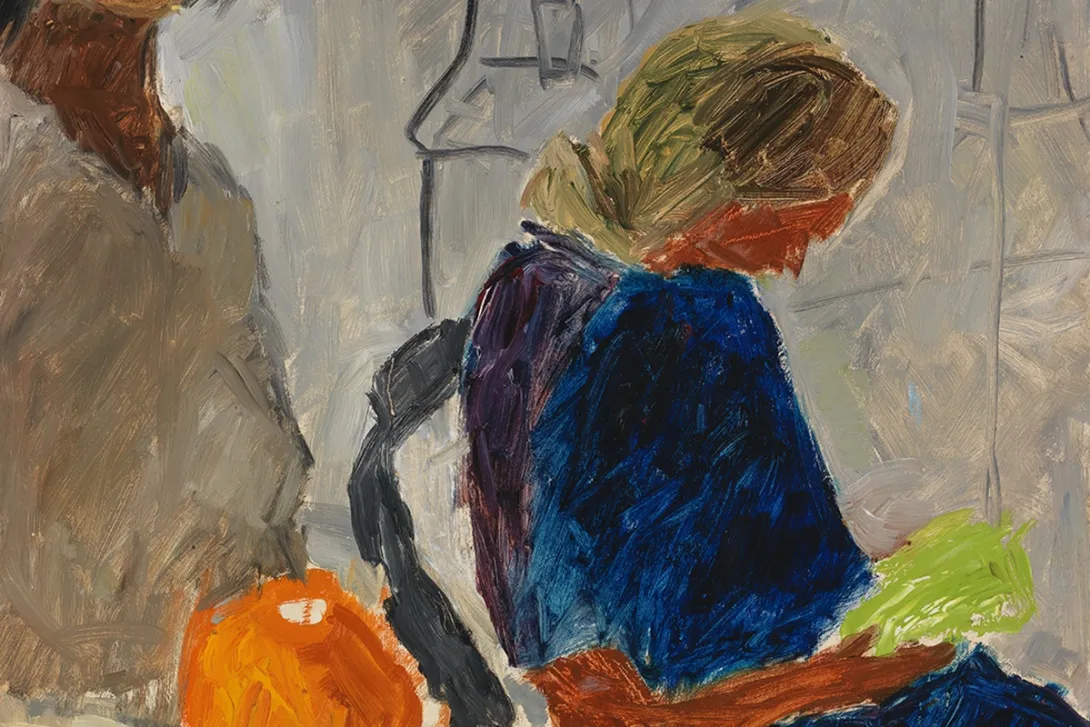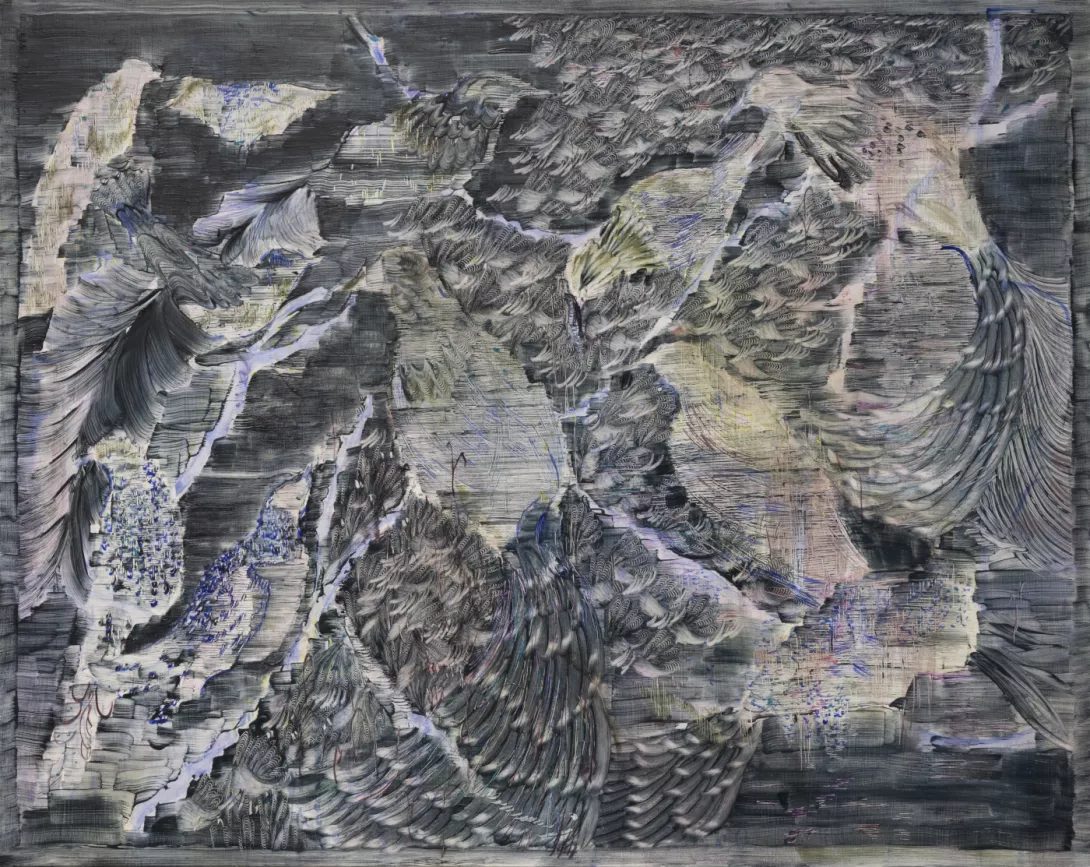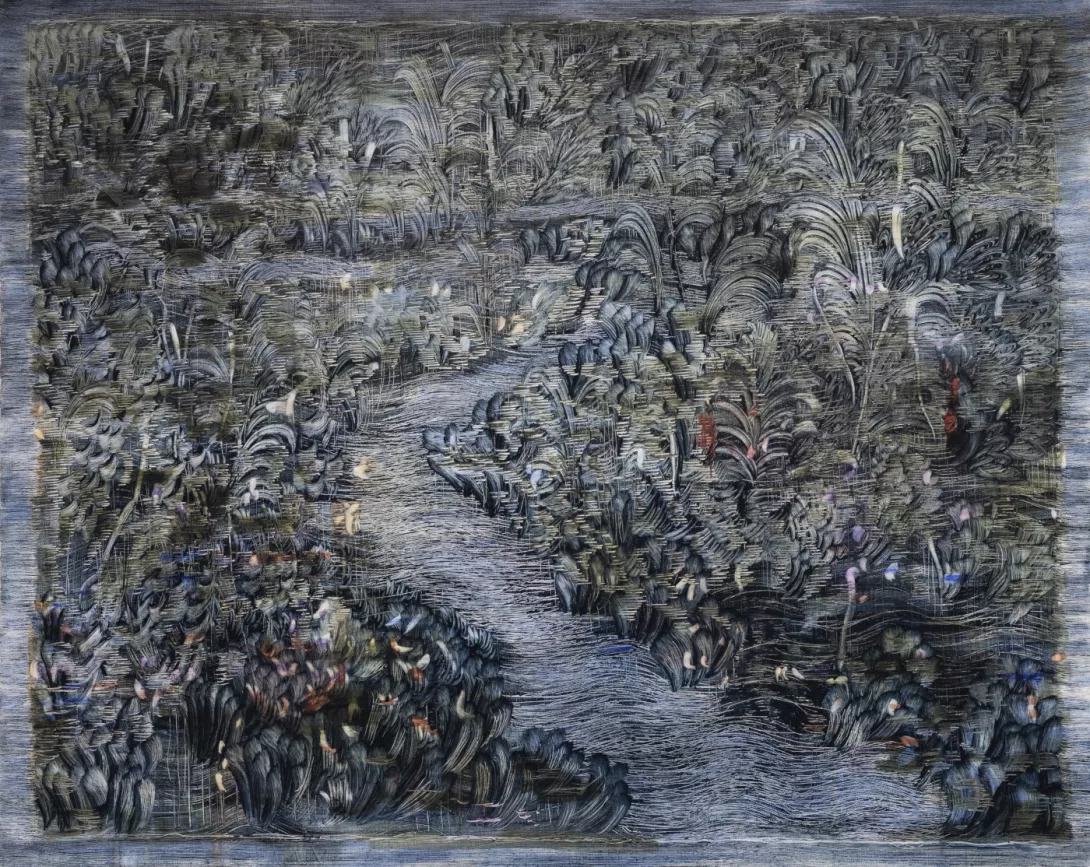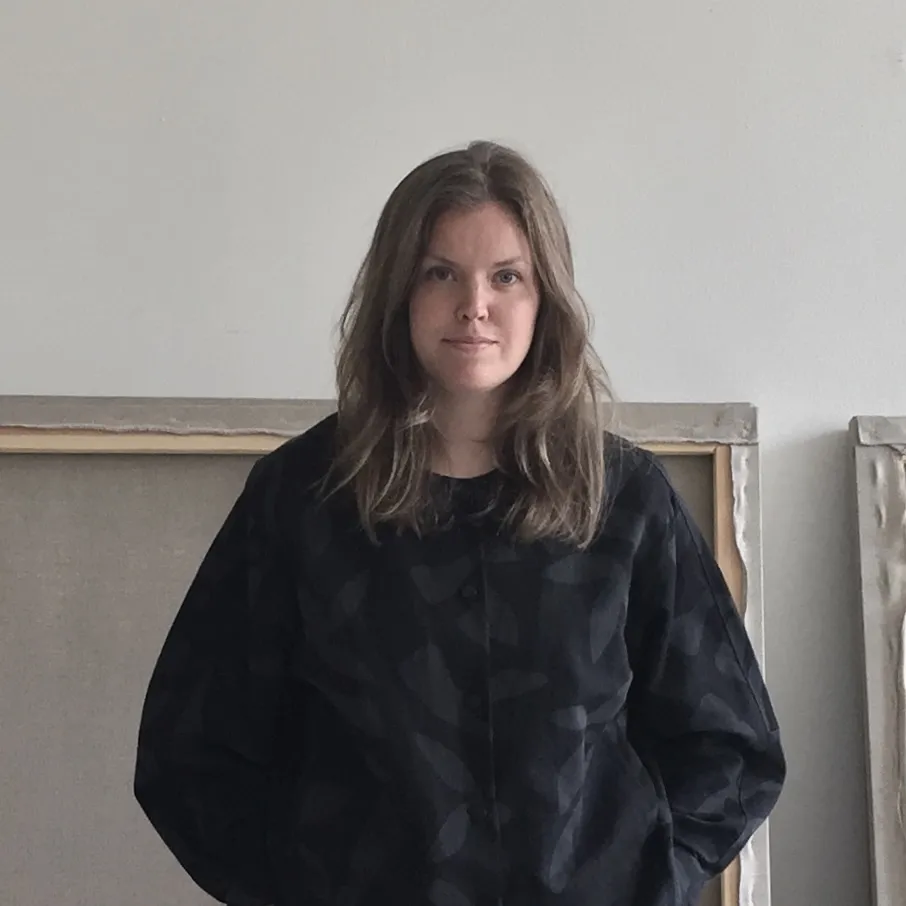Anniversary Exhibition Free 90 | HAM


Eveliina Hämäläinen is the head teacher of the First-Year Programme at the Free Art School. In the early years of her artistic career, she found inspiration in a book about Agnes Martin, as well as in moments spent on the remote island of Utö, surrounded by the sea.
My paintings have always carried traces of line. There’s something magical about lines—they carry light and shadow through time. During school, I searched for a way of painting where the gesture would be one with the subject. I painted for four years at the Free Art School, and at the Academy of Fine Arts I initially explored many other techniques: I made paper out of old clothes, practiced printmaking, woodcuts, and wood carving. Eventually, I began carving into painting surfaces, and later even into the paint itself. From printmaking, I gained a layered way of thinking.
During a still life painting course near the end of my studies at the Academy, I created a small postage stamp-sized area with the kind of painterly trace I had been striving for. The painting was on wood; it still took time before I managed to transfer that trace onto canvas with oil paint. School offered room to fail, to try, and to search. What I was doing took time—and only became clear much later.
At the Free Art School, the focus and care placed around painting were incredibly valuable. That calm helped in the more multidisciplinary environment of the Academy, where I already had some peace with my practice. At their best, both schools offered knowledge passed from hand to hand—thinking and skills that arise through practical work. The study of materials, which taught me to view painting from the perspective of its substances, was especially enriching.
I believe the most important thing during one’s studies is to find a source of inspiration and working methods that not only advance your painting but continue to sustain you after graduation.
I walk, bike, and swim in the sea year-round—that’s where I find my subjects, both beneath and above the surface. When the body and senses are alert, painting flows. One image leads to another; often, I get the idea for the next painting while working on the previous one. The ideas come as images, initially blurry, but they sharpen over time. I nurture them through seeing and experiencing. I collect images, sketches, and color charts. When traveling, I make simpler ink paintings.
Eventually, I reflect on what layers of color I need to achieve the desired result. When I arrive at the studio, I know what I need to do. I can’t wait for the right moment or inspiration—that work happens outside the studio.
Coming to the Free Art School felt like coming home, even though I didn’t yet know where I was. I found that same sense of familiarity again on the island of Utö in the middle of the sea, where the Academy has a residency. On this small, rugged rock, you can see the horizon in every direction. The place still feels like a kind of bookmark. When painting becomes difficult, I often ask myself what I would do on the island. It helps me cut away the non-essential.
Out of curiosity about life and humanity. My paintings are intimate and personal. They are based on observations and lived experience—what it means to be connected to the world and to others. I painted a series about dark forests and the sea, about the sensation of not seeing but hearing and sensing plants, wind, sound, and water. My most recent exhibition focused on trust and human bonds.
Through painting, I can depict life’s slow, endless change and how precious, delicate threads connect us to the present, to the past, and to what lies ahead.
In old paintings, I’m fascinated by how colors change over time—by cracks and wear. I think about the messages people of the past crafted with their own hands and what remains of them now. Painting turns the invisible into visible—pigments into images and ideas into vision. That miracle still inspires me.
In my twenties, I read the Agnes Martin book Silence on the Floor of My House, published by the Free Art School. Her presence in the essays and interviews left a deep impression. Agnes remains a fascinating painter whose work doesn’t let go once you encounter it.
I would love to listen to her thoughts on life and painting, to observe how her lines become grids. In that simplicity and restraint lies a timelessness I keep returning to.



